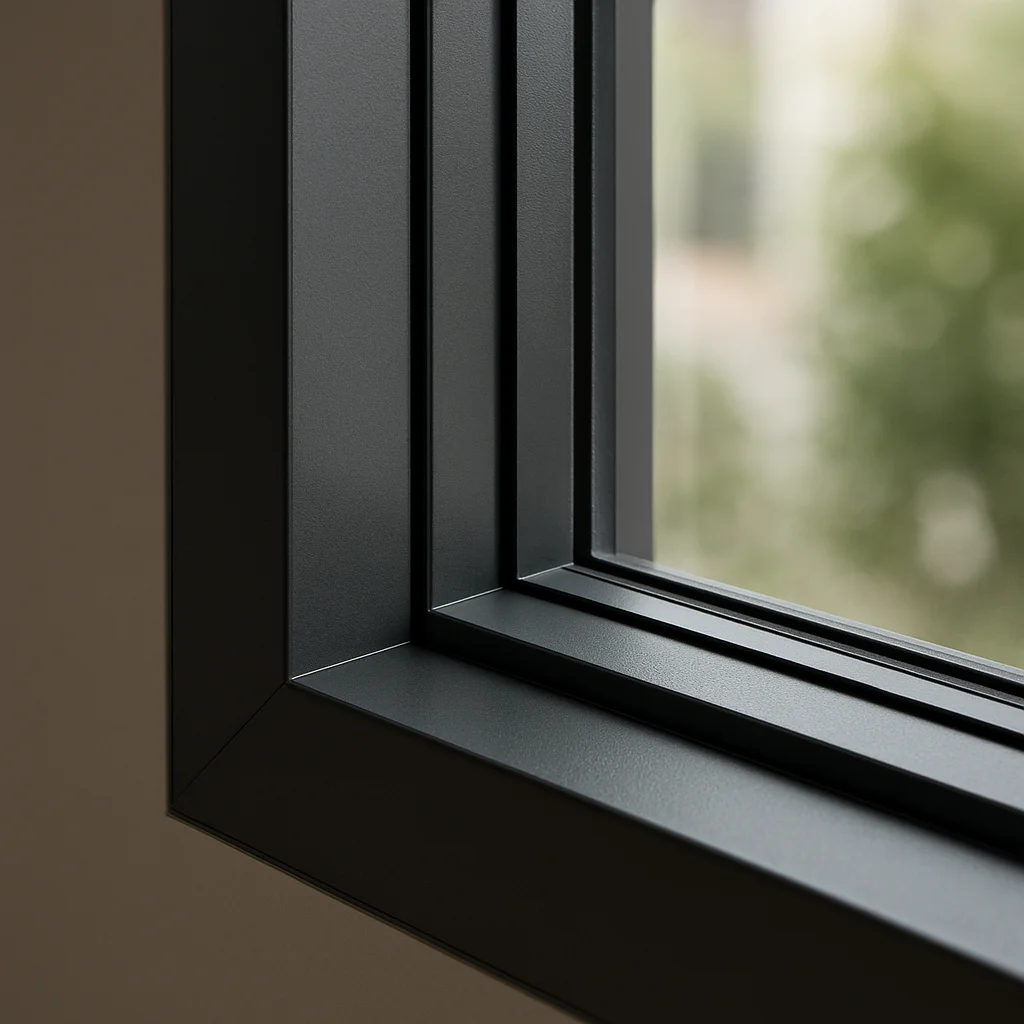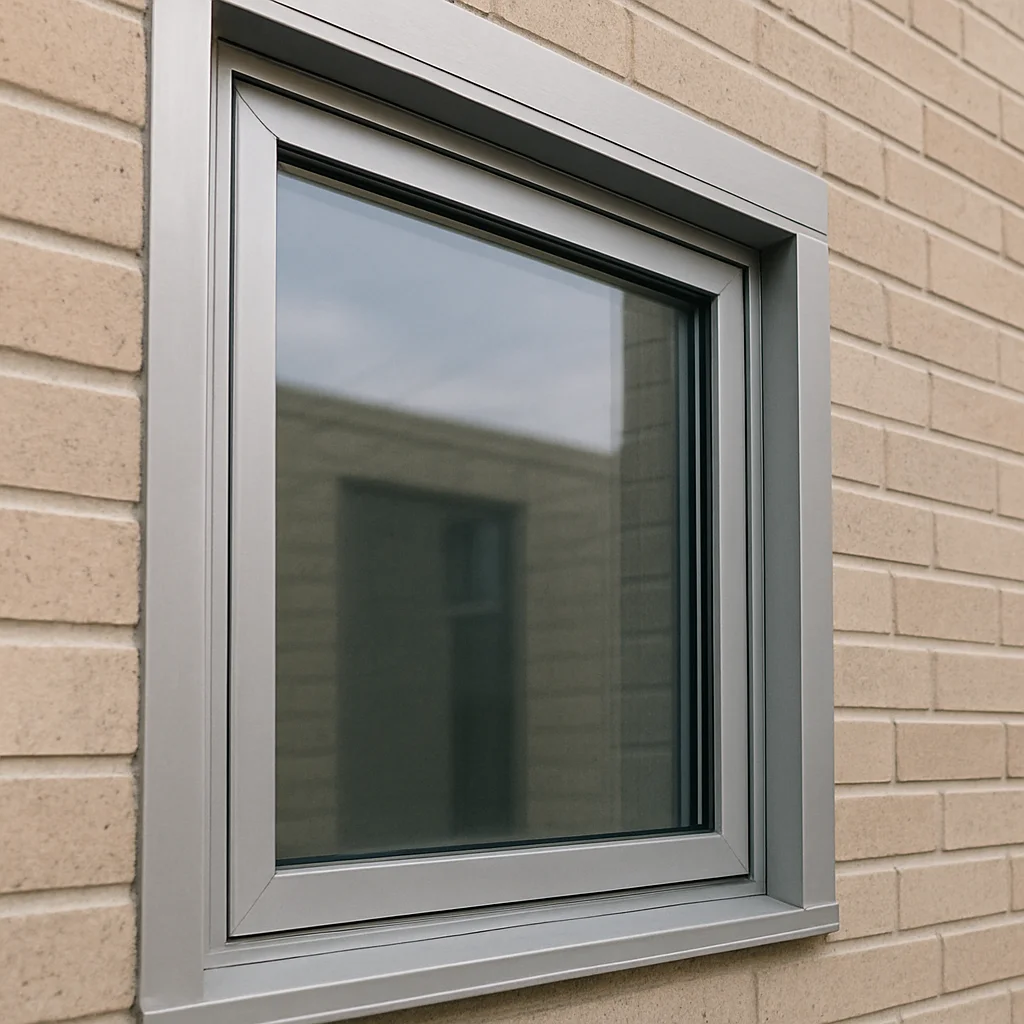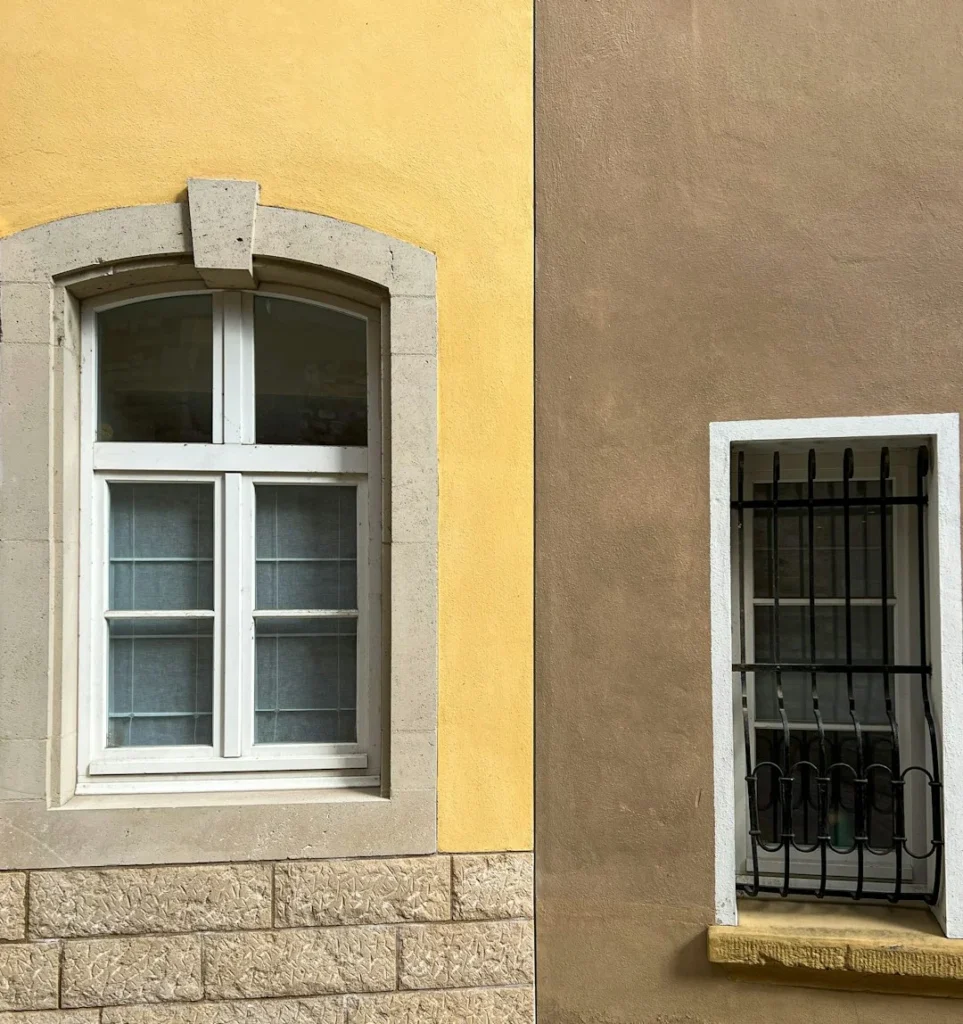Understanding Window Frame Types: Compare Materials & Designs
Unlock your home’s potential with our guide to understanding different types of window frames. Discover materials, designs, and energy-efficient options.
Understanding Different Types of Window Frames

Window frames are the structural components that hold the glass in place. They are crucial for the overall performance of the window, providing support and stability to the entire window unit. A well-chosen frame can enhance the aesthetic appeal of your home, complementing both its interior and exterior design. Beyond aesthetics, the type of frame you choose can influence the window’s insulation properties, appearance, and longevity, directly affecting your home’s energy efficiency and comfort levels.
The frame material and design also play a pivotal role in how well the windows can withstand weather conditions, resist wear and tear, and how much upkeep they will require over time. By understanding these factors, you can select a window frame that not only meets your design preferences but also aligns with your functional needs and maintenance capabilities.
Types of Window Frame Materials
There are several materials used to make window frames, each offering unique benefits and drawbacks. Understanding these will help you make an informed decision that balances aesthetics with functionality and cost considerations.
Wood Window Frames
Wood frames have been used for centuries and are known for their natural beauty and excellent insulation properties. They can be painted or stained in any color, offering great versatility in design. Wood frames lend a classic and timeless appeal to homes, making them an ideal choice for traditional architecture or anyone looking to add warmth and character to their space.
- Pros: Natural look, excellent insulator, customizable.
- Cons: Requires regular maintenance to prevent rot and warping, generally more expensive.
Despite their charm, wood frames demand a commitment to maintenance. Regular painting or staining is essential to protect against moisture and pests, which can lead to rot and warping over time. However, for those willing to invest in their upkeep, wood frames can provide decades of beauty and performance, enhancing your home’s curb appeal and potentially increasing its resale value.
Aluminum Window Frames

Aluminum frames are known for their strength and durability. They are often used in modern architecture due to their sleek appearance, providing a clean and contemporary look that complements minimalist and industrial design aesthetics. Aluminum’s lightweight nature makes it a practical choice for larger window installations, where strength without bulk is desired.
- Pros: Durable, lightweight, low maintenance, sleek design.
- Cons: Poor insulator, can be prone to condensation.
While aluminum frames are virtually maintenance-free and resistant to rust, they are less effective as insulators, which can result in higher energy costs. To mitigate this, many manufacturers now offer aluminum frames with thermal breaks, which improve their insulation capabilities. Despite this drawback, their durability and modern appeal make them a popular choice for commercial properties and sleek residential designs.
Vinyl Window Frames
Vinyl frames are made from polyvinyl chloride (PVC) and are popular for their affordability and energy efficiency. They have become a staple in both new constructions and renovations, offering a budget-friendly option that doesn’t compromise on performance.
- Pros: Cost-effective, good insulator, low maintenance, resistant to moisture.
- Cons: Limited color options, can warp under extreme temperatures.
Vinyl frames are virtually maintenance-free, never requiring painting and resisting moisture-related damage such as rot and corrosion. However, they are susceptible to warping or cracking in extreme temperature fluctuations, which can affect their longevity. Despite these limitations, their affordability and insulating properties make them a favorite among homeowners seeking a practical and efficient solution.
Fiberglass Window Frames
Fiberglass frames are relatively new to the market but are gaining popularity due to their strength and energy efficiency. Made from glass fibers and resin, they offer a robust and eco-friendly alternative to traditional materials.
- Pros: Strong, energy-efficient, low maintenance, can mimic wood appearance.
- Cons: Higher cost, fewer color options.
Fiberglass frames are resistant to warping, expanding, or contracting, making them highly stable and ideal for extreme climates. Although they come at a higher price point, their durability and minimal maintenance requirements often justify the initial investment. Fiberglass can also be painted, offering some flexibility in design, though the color palette is generally more limited compared to wood or vinyl.
Comparing Window Frame Types

by Svetlana Rozhdestvenskaia (https://unsplash.com/@sweetspring)
Choosing the right window frame involves considering various factors like cost, maintenance, energy efficiency, and aesthetics. Here’s a quick comparison to help guide your decision:
- Wood: Best for traditional aesthetics and superior insulation, but requires maintenance.
- Aluminum: Ideal for a modern look and durability but lacks insulation.
- Vinyl: Great for cost and efficiency but limited in design options.
- Fiberglass: Offers durability and efficiency with a higher price tag.
Each material brings its own set of strengths and weaknesses to the table, and your choice should align with your specific needs and priorities. Whether you’re prioritizing aesthetics, budget, or longevity, understanding these nuances will help you make an informed choice that enhances your home’s value and comfort.
Window Frame Designs
The design of your window frame can significantly impact the look and functionality of your windows. Let’s explore some popular designs that cater to different architectural styles and functional requirements.
Casement Window Frames
Casement windows are hinged at the side and open outward like a door, providing excellent ventilation. They are ideal for areas where maximum airflow is desired, such as kitchens and bathrooms, allowing you to capture breezes effectively.
- Pros: Easy to open, good ventilation, tight seal for energy efficiency.
- Cons: Not suitable for window air conditioners, requires space to open.
Casement windows offer a tight seal when closed, which enhances their energy efficiency by reducing drafts. However, their outward-opening design requires careful placement to avoid obstructions like trees or neighboring structures. Their ease of operation and clean lines make them a favorite in contemporary and traditional settings alike.
Double-Hung Window Frames
Double-hung windows have two sashes that move vertically. They are one of the most common window types, appreciated for their versatility and ease of use.
- Pros: Versatile, easy to clean, good ventilation.
- Cons: Less energy-efficient than casement windows, can be difficult to open if not maintained.
Double-hung windows offer flexibility in ventilation, allowing you to open either the top or bottom sash. This feature is particularly beneficial for safety and child-friendly environments. However, they may require regular maintenance to ensure smooth operation and to prevent air leakage over time.
Sliding Window Frames
Sliding windows have sashes that slide horizontally. They are often used in modern homes, offering a streamlined appearance and practical function.
- Pros: Easy to operate, low maintenance, ideal for wide window spaces.
- Cons: Can be less energy-efficient, limited ventilation.
Sliding windows are perfect for wide horizontal spaces and provide an unobstructed view of the outdoors. Their simple design makes them easy to use and maintain, though they may not offer the same level of ventilation as other types. Despite this, their sleek appearance and ease of use make them a popular choice for contemporary homes.
Energy Efficiency and Window Frames
The material and design of a window frame play a significant role in its energy efficiency, impacting both your comfort and energy bills.
- Wood frames offer the best insulation, helping to keep your home warm in the winter and cool in the summer. Their natural insulating properties make them a top choice for energy-conscious homeowners.
- Vinyl and fiberglass frames also provide good insulation at a lower cost. These materials effectively reduce heat transfer, contributing to a more stable indoor climate.
- Aluminum frames, while strong, require a thermal break to improve their insulation properties. Without this feature, they can become a source of heat loss or gain.
When selecting a frame, consider how its insulation properties align with your climate and energy-saving goals. Investing in energy-efficient frames can lead to significant savings on heating and cooling costs over time, making them a worthwhile consideration for environmentally conscious and budget-savvy homeowners alike.
Maintenance Considerations
When choosing a window frame, consider the maintenance required to keep it looking good and functioning well. Different materials come with varying levels of upkeep, which can affect your long-term satisfaction and investment in the product.
- Wood frames need regular painting or staining to protect against moisture and pests. Although they require more upkeep, their timeless beauty and superior insulation can justify the effort.
- Aluminum and fiberglass frames are low-maintenance, requiring only occasional cleaning. Their durability and resistance to the elements make them a worry-free option for busy homeowners.
- Vinyl frames are virtually maintenance-free, resistant to moisture, and never need painting. They offer a fuss-free solution for those who prefer minimal upkeep without sacrificing performance.
Evaluating the time and resources you’re willing to dedicate to maintenance will help you choose a frame that fits your lifestyle and ensures long-lasting satisfaction.
Final Thoughts
Selecting the right window frame involves balancing aesthetics, performance, and maintenance. Each material has its own set of benefits and challenges, so consider what factors are most important to you and your home. By aligning your choice with your specific needs and preferences, you can enhance your home’s value, comfort, and style.
Whether you prefer the timeless elegance of wood, the modern look of aluminum, the practicality of vinyl, or the durability of fiberglass, understanding the different types of window frames will help you make the best decision for your home. With the right frame, you can enjoy improved energy efficiency, reduced maintenance, and an enhanced aesthetic that complements your living space.